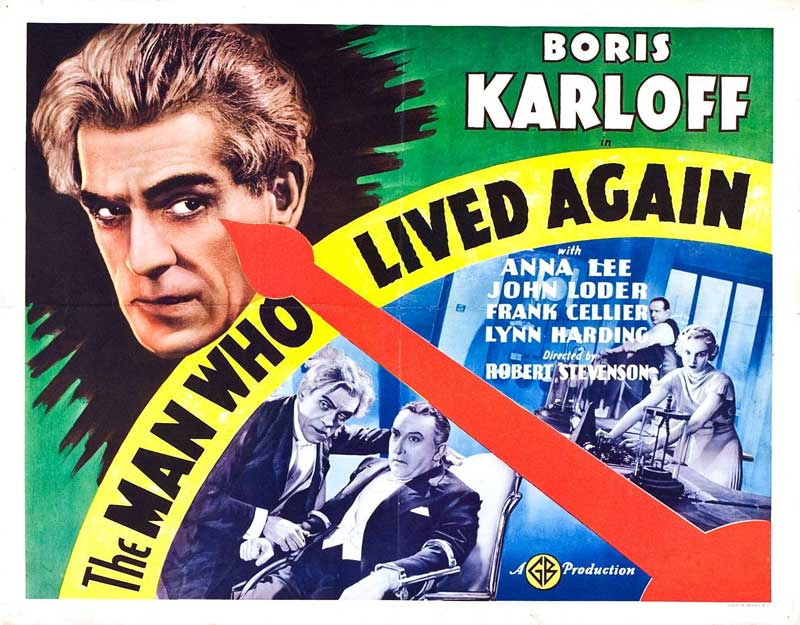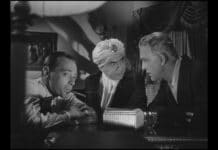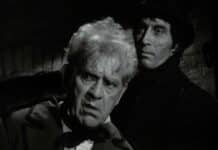ANDREW GARVEY reviews the Karloff classic, The Man Who Changed His Mind 1936

Title: The Man Who Changed His Mind aka The Man Who Lived Again
Year Released: 1936
Director: Robert Stevenson
Cast: Boris Karloff and Anna Lee
Best known as Dr Frankenstein’s monster, screen icon Boris Karloff got his chance to play a mad doctor, rather than the unfortunate creation in this lesser-known but hugely enjoyable sci-fi/horror film.
As the reclusive, once-respectable but now widely considered bonkers, Dr Laurience (pronounced Lorenz – presumably to sound more foreign and sinister) we first see Karloff, in his laboratory, so evidently a hop-skip-and-a-jump away from madness that he may as well have a big, flashing sign over his head that says ‘NUTTER’.
Laurience welcomes his new, young and inexperienced assistant, Dr Clare Wyatt, much to the mocking despair of his piano-playing, wheelchair-using lackey, Clayton. “A female scientist”, he scoffs, “all tears and hysterics. And she can’t keep a secret.”
Aware that Laurience’s country house has no servants (all of them too scared of him and his secretive but much speculated upon work to stay), Wyatt goes about doing what any female doctor in a ’30s film would do – the dishes.
It makes a change from her other specialty – staring wide-eyed at the camera – at least.
Showing her around his lab, Laurience uses his machinery, a fantastic-looking contraption with dials, rods, coils and wires everywhere, to successfully transplant the mind of a friendly, cheerfully helpful chimpanzee into that of a far more angry, screeching specimen and vice versa.
When the swap works, he announces, to her horror, his plan to do the same with human beings.
Of course he does.
No prizes for guessing that things may go poorly from there as an obsessive man of science, dubbed (thanks to the hype and promotion of his media mogul benefactor Lord Haslewood) ‘the Brain Genius’ meddles with things he really, really shouldn’t.
A lot to enjoy. I suggest you do exactly that.
Englishman Robert Stevenson, director of 1937 adventure classic King Solomon’s Mines and, decades later, a couple of children’s films called Mary Poppins and Bedknobs and Broomsticks, does a great job, making a fast-paced film and putting together a brilliant ‘losing it’ montage for an enraged Laurience.
In a sharp, amusing script, Clayton, a bitter and literally twisted man in the classic mould of the angry, creepy and disabled sidekick gets some cracking lines and his increasingly acrimonious relationship with Laurience dominates most of the film and they make a very believably unhappy twosome.
Also known as the Brainsnatcher and The Man Who Lived Again, there’s a lot more to the film than the simple tale of a mad doctor, borrowed heavily from Dr Jekyll and Mr Hyde.
Taking potshots at the press, celebrity, wealth and the scientific establishment and offering up some ideas to later films, most obviously the Fly, there’s a lot here for a 62 minute film.
What did you think of The Man Who Changed His Mind 1936? Tell us in the comments section!







